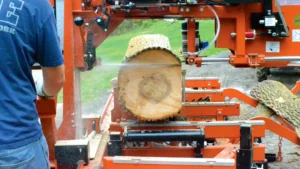
+1(213)267-2305
26 ip4 smatstill Road
mjsawmillslumber22@gmail.com
-
Home
-
Blog
-
Sawmills And Equipment
-
Contact Us
-
Blog
-
Sawmills And Equipment
-
Contact Us
+1(213)267-2305
26 ip4 smatstill Road
mjsawmillslumber22@gmail.com

In the realm of woodworking and lumber processing, achieving the highest quality and precision is paramount. Planers and moulders are two critical machines that help transform rough-cut lumber into smooth, finished products with consistent dimensions and profiles. This blog post delves into the functions, benefits, and considerations for using planers and moulders, and how they contribute to efficient and high-quality woodworking.
Planers are machines designed to smooth the surfaces of lumber, ensuring uniform thickness and a polished finish. They remove material from the wood to achieve a consistent thickness across the entire board. Planers are essential for converting rough-cut lumber into ready-to-use boards with precise dimensions.
Types of Planers:
Moulders are used to shape wood into specific profiles and patterns. They are equipped with multiple cutting heads that can be configured to create a variety of moulding profiles, including intricate designs for trim, paneling, and decorative elements. Moulders are crucial for producing high-quality, consistent moulding and trim pieces.
Types of Moulders:
To maximize the benefits of planers and moulders, consider the following:
As technology continues to advance, planers and moulders are becoming increasingly sophisticated. Innovations such as smart sensors, AI-driven controls, and enhanced automation are set to further improve precision, efficiency, and versatility in woodworking. These advancements promise to enhance the capabilities of planers and moulders, making them even more valuable tools in modern woodworking operations.
Planers and moulders are essential machines in woodworking and sawmill operations, each serving a vital role in achieving precision and efficiency. Planers ensure uniform thickness and a smooth finish, while moulders provide the ability to create intricate profiles and high-quality trim. By understanding their functions, benefits, and considerations, you can make informed decisions that enhance your woodworking processes and drive success in your operations. Investing in the right planers and moulders ensures superior craftsmanship, increased productivity, and a competitive edge in the woodworking industry.

Lorem ipsum dolor sit amet, consectetur adipiscing elit. Ut elit tellus, luctus nec ullamcorper mattis, pulvinar dapibus leo.



